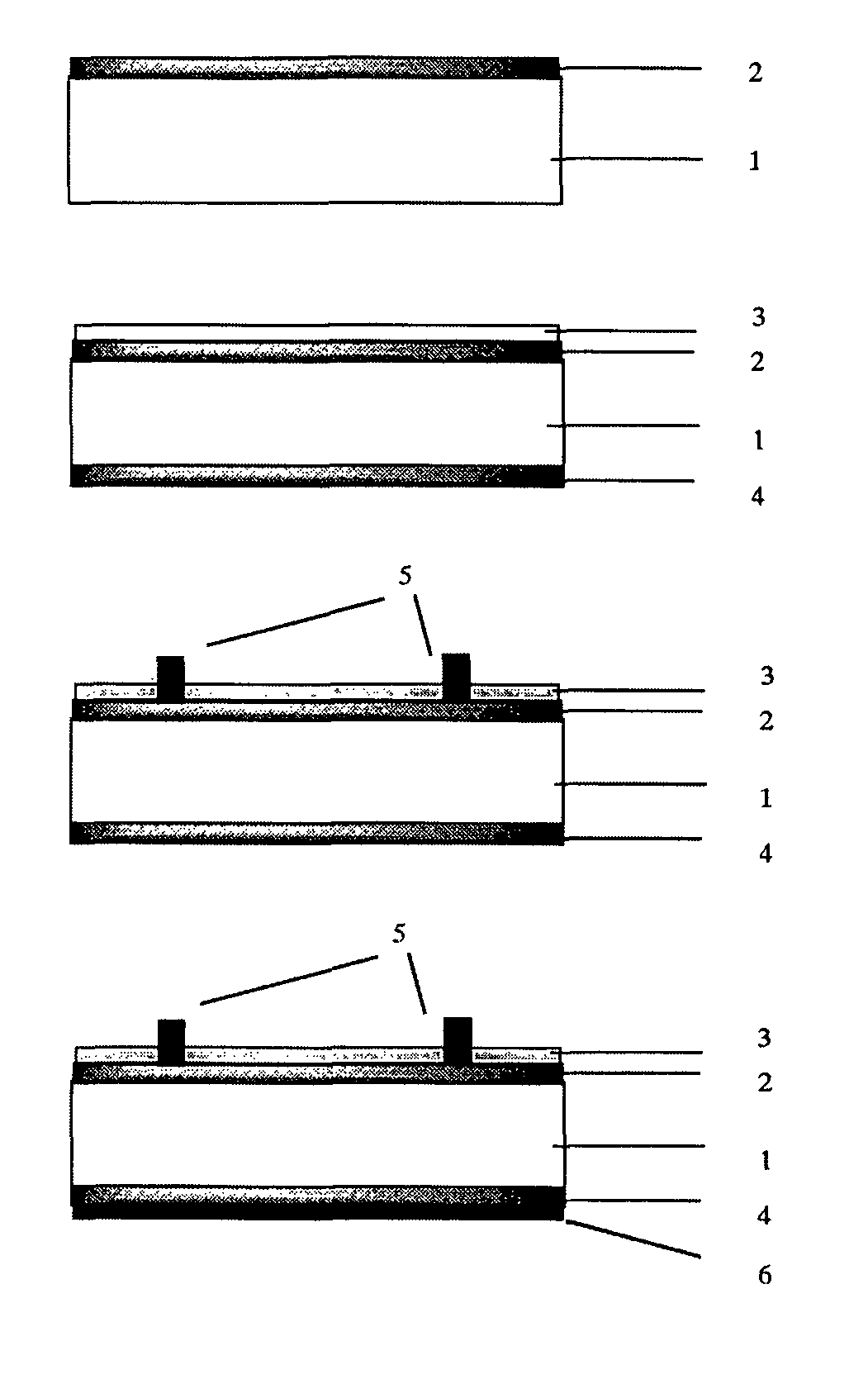Functional paste
a technology of functional paste and antireflection layer, applied in the direction of electrically conductive paint, conductor, metal/alloy conductor, etc., can solve the problems of insufficient practical application, difficult method of direct patterning of antireflection layer, and complex method, and achieve good electrical properties
- Summary
- Abstract
- Description
- Claims
- Application Information
AI Technical Summary
Benefits of technology
Problems solved by technology
Method used
Image
Examples
example 1
[0043]A mixture of[0044]Ag-coated Ni powder: 93 parts by weight (75.0 wt. %),[0045]oleic acid: 1 part by weight (0.8 wt. %),[0046]epoxy resin: 6 parts by weight (4.8 wt. %),[0047]ammonium hydrogen fluoride: 3 parts by weight (2.4 wt. %), and[0048]butyl carbitol: 6 parts by weight (4.8 wt. %),
prepared using a hybrid mixer was added with a mixture of glycerin / ethylene glycol=3 / 1 weight ratio in an amount of 15 parts by weight (12.1 wt. %), well mixed, and the resultant was applied on a Si wafer with a width approximately 1 mm, length approximately 1 cm, and thickness approximately 400 μm, then baked on a hot plate in air at 70-75° C. for 5 min and subsequently at 220° C. for 15 min, so that an electrode was formed. The resistance between the two electrodes was 90 Ω.
[0049]The preparation of the above composition excluding the ammonium hydrogen fluoride was used to form an electrode using the same process. The resistance between the two electrodes was 210 kΩ.
example 2
[0050]A mixture of[0051]Ag-coated Ni powder: 93 parts by weight (75.0 wt. %),[0052]oleic acid: 1 part by weight (0.8 wt. %),[0053]epoxy resin: 6 parts by weight (4.8 wt. %),[0054]ammonium hydrogen fluoride: 3 parts by weight (2.4 wt. %), and[0055]butyl carbitol: 6 parts by weight (4.8 wt. %),
prepared using a hybrid mixer was added with a mixture of glycerin / ethylene glycol=3 / 1 weight ratio in an amount of 15 parts by weight (12.1 wt. %), well mixed, and the resultant was applied on a Si wafer having a SiO2 layer of approximately 80 nm thickness, with a width approximately 1 mm, length approximately 1 cm, and thickness approximately 400 μm, then baked on a hot plate in air at 70-75° C. for 5 min and subsequently at 220° C. for 15 min, so that an electrode was formed. The resistance between the two electrodes was 900 Ω.
[0056]The preparation of the above composition excluding the ammonium hydrogen fluoride was used to form an electrode using the same process. The resistance between the...
example 3
[0057]A mixture of[0058]Ag-coated Ni powder: 93 parts by weight (66.9 wt. %),[0059]oleic acid: 1 part by weight (0.7 wt. %),[0060]epoxy resin: 6 parts by weight (4.3 wt. %),[0061]ammonium hydrogen fluoride: 3 parts by weight (2.2 wt. %), and[0062]butyl carbitol: 6 parts by weight (4.3 wt. %),
prepared using a hybrid mixer was added with a mixture of glycerin / ethylene glycol=3 / 1 weight ratio in an amount of 15 parts by weight (10.8 wt. %) and a silver colloidal solution AgE-102 (Nippon Paint Co., Ltd.) in an amount of 15 parts by weight (10.8 wt. %), well mixed, and the resultant was applied on a Si wafer having a SiO2 layer, with a width approximately 1 mm, length approximately 1 cm, and thickness approximately 400 μm, then baked on a hot plate in air at 70-75° C. for 5 min and subsequently at 220° C. for 15 min, so that an electrode was formed. The resistance between the two electrodes was 160 Ω.
[0063]The preparation of the above composition excluding the silver colloidal solution A...
PUM
| Property | Measurement | Unit |
|---|---|---|
| temperature | aaaaa | aaaaa |
| temperature | aaaaa | aaaaa |
| viscosity | aaaaa | aaaaa |
Abstract
Description
Claims
Application Information
 Login to View More
Login to View More - R&D
- Intellectual Property
- Life Sciences
- Materials
- Tech Scout
- Unparalleled Data Quality
- Higher Quality Content
- 60% Fewer Hallucinations
Browse by: Latest US Patents, China's latest patents, Technical Efficacy Thesaurus, Application Domain, Technology Topic, Popular Technical Reports.
© 2025 PatSnap. All rights reserved.Legal|Privacy policy|Modern Slavery Act Transparency Statement|Sitemap|About US| Contact US: help@patsnap.com

